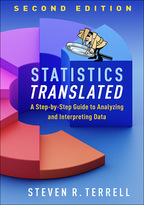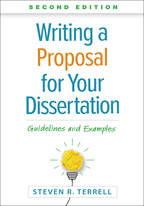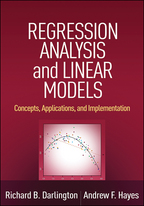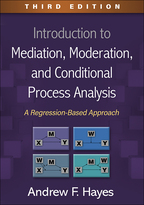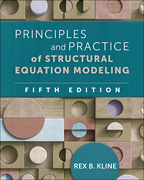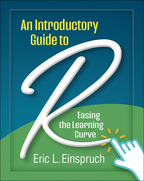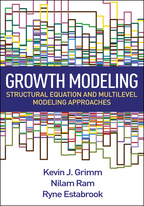Statistics Translated
Second Edition
A Step-by-Step Guide to Analyzing and Interpreting Data
Steven R. Terrell
A Little Background
Many Students Do Not Know What They’re Getting Into
A Few Simple Steps
- Identify the Problem
- State a Hypothesis
- Identify the Independent Variable
- Identify and Describe the Dependent Variable
- Choose the Right Statistical Test
- Use Data Analysis Software to Test the Hypothesis
So, What’s New in This Edition?
Summary
Do You Understand These Key Words and Phrases?
1. Identifying a Research Problem and Stating Hypotheses
Introduction
Identify the problem
- Characteristics of a Good Problem Statement
- Finding a Good Research Problem
- The Problem Is Interesting to the Researcher
- The Scope of the Problem Is Manageable by the Researcher
- The Researcher Has the Knowledge, Time, and Resources Needed to Investigate the Problem
- The Problem Can Be Researched through the Collection and Analysis of Numeric Data
- Investigating the Problem Has Theoretical or Practical Significance
- It Is Ethical to Investigate the Problem
- Writing the Problem Statement
- Problem Statements Must Be Clear and Concise
- The Problem Statement Must Include All Variables to Be Considered
- The Problem Statement Should Not Interject the Researcher’s Bias
- Summary of Step 1: Identify the Problem
State a Hypothesis
- An Example of Stating Our Hypothesis
- A Little More Detail
- The Direction of Hypotheses
- Using Directional Hypotheses to Test a “Greater Than” Relationship
- Using Directional Hypotheses to Test a “Less Than” Relationship
- Nondirectional Hypotheses
- Hypotheses Must Be Testable via the Collection and Analysis of Data
- Research versus Null Hypotheses
- Stating Null Hypotheses for Directional Hypotheses
- Issues Underlying the Null Hypothesis for Directional Research Hypotheses
- Stating Null Hypotheses for Nondirectional Hypotheses
- A Preview of Testing the Null Hypothesis
- Where Does That Leave Us?
- Statistical Words of Wisdom
- Summary of Step 2: State a Hypothesis
Do You Understand These Key Words and Phrases?
Quiz Time!
Problem Statements
Case Studies:
The Case of Distance Therapy
- The Case of the New Teacher
- The Case of Being Exactly Right
- The Case of “Does It Really Work?”
- The Case of Advertising
- The Case of Learning to Speak
- The Case of Kids on Cruises
2. Identifying the Independent and Dependent Variables in a Hypothesis
Introduction
Identify the Independent Variable
- Nonmanipulated Independent Variables
- Another Way of Thinking about Nonmanipulated Independent Variables
- Manipulated or Experimental Independent Variables
- Levels of the Independent Variable
- Summary of Step 3: Identify the Independent Variable
Identify and Describe the Dependent Variable
- Identifying Your Dependent Variable
- What Type of Data Are We Collecting?
- Interval Data
- Data Types—What Is the Good News?
- Summary of the Dependent Variable and Data Types
- Measures of Central Tendency
- The Mean, Median, and Mode—Measures of Central Tendency
- The Mode
- Using Statistical Software to Analyze Our Data
- Summary of the First Part of Step 4: Identify and Describe the Dependent Variable
Do You Understand These Key Words and Phrases?
Do You Understand These Formulas?
Quiz Time!
3. Measures of Dispersion and Measures of Relative Standing
Introduction
Measures of Dispersion
- The Range
- The Standard Deviation
- The Variance
Measures of Relative Standing
- Percentiles
- Computing and Interpreting T-Scores
- Stanines
- Putting It All Together
- Using SPSS for T-Scores and Stanines—Not So Fast!
Summary
Do You Understand These Key Words and Phrases?
Do You Understand These Formulas?
Quiz Time!
4. Graphically Describing the Dependent Variable
Introduction
Graphical Descriptive Statistics
- Graphically Describing Nominal Data
- Pie Charts
- Bar Charts
- Graphically Describing Quantitative Data
- Scatterplots
- Histograms
- Don’t Let a Picture Tell You the Wrong Story!
- Summary of Graphical Descriptive Statistics
The Normal Distribution
- Things That Can Affect the Shape of a Distribution of Quantitative Data
Summary of the Normal Distribution
Do You Understand These Key Words and Phrases?
Quiz Time!
5. Choosing the Right Statistical Test
Introduction
The Very Basics
- The Central Limit Theorem
- The Sampling Distribution of the Means
- Summary of the Central Limit Theorem and the Sampling Distribution of the Means
How Are We Doing So Far?
Estimating Population Parameters Using Confidence Intervals
- The Alpha Value
- Type I and Type II Errors
Predicting a Population Parameter Based on a Sample Statistic Using Confidence Intervals
- Pay Close Attention Here
- Confidence Intervals for Alpha = .01 and Alpha = .10
- Another Way to Think about z Scores in Confidence Intervals
- Tying This All Together
- Be Careful When Changing Your Alpha Values
- Do We Understand Everything We Need to Know about Confidence Intervals?
Testing Hypotheses about a Population Parameter Based on a Sample Statistic
- Making a Decision about the Certification Examination Scores
- We Are Finally Going to Test Our Hypothesis!
- Testing a One-Tailed Hypothesis
Testing a One-Tailed “Less Than” Hypothesis
Summarizing What We Just Said
Be Careful When Changing Your Alpha Values
The Heart of Inferential Statistics
- Probability Values
- A Few More Examples
- Great News—We Will Always Use Software to Compute Our p Value
Choose the Right Statistical Test
- You Already Know a Few Things
- A Couple of Notes about the Table
- Summary of Step 5: Choose the Right Statistical Test
Do You Understand These Key Words and Phrases?
Do You Understand These Formulas and Symbols?
Quiz Time!
6. The One-Sample t-Test
Introduction
Welcome to the Guinness Breweries
The t Distribution
- Putting This Together
- Determining the Critical Value of t
- Degrees of Freedom
- Be Careful Computing Degrees of Freedom
- Let’s Get Back to Our Anxiety Hypothesis
- Plotting Our Critical Value of t
- The Statistical Effect Size of Our Example
Let’s Look at a Directional Hypothesis
- Using the p Value
- Check Your Mean Scores!
One More Time
- Important Note about Software Packages
Let’s Use the Six-Step Model!
- The Case of Slow Response Time
- Identify the Problem
- State a Hypothesis
- Identify the Independent Variable
- Identify and Describe the Dependent Variable
- Choose the Right Statistical Test
- Use Data Analysis Software to Test the Hypothesis
- The Case of Stopping Sneezing
- Identify the Problem
- State a Hypothesis
- Identify the Independent Variable
- Identify and Describe the Dependent Variable
- Choose the Right Statistical Test
- Use Data Analysis Software to Test the Hypothesis
- The Case of Growing Tomatoes
- Identify the Problem
- State a Hypothesis
- Identify the Independent Variable
- Identify and Describe the Dependent Variable
- Choose the Right Statistical Test
- Use Data Analysis Software to Test the Hypothesis
Summary
Do You Understand These Key Words and Phrases?
7. The Independent-Sample t-Test
Introduction
If We Have Samples from Two Independent Populations, How Do We Know If They Are Significantly Different from One Another?
- The Sampling Distribution of Mean Differences
- Calculating the t Value for the Independent-Sample t-Test
- Pay Attention Here
- Testing Our Hypothesis
- The p Value
- Note on Variance and the t-Test
- The Statistical Effect Size of Our Example
- Let’s Try Another Example
- Remember the Effect Size
- How Does This Work for a Directional Hypothesis?
- Reminder—Always Pay Attention to the Direction of the Means!
Putting the Independent-Sample t-Test to Work
- The Case of the Cavernous Lab
- Identify the Problem
- State a Hypothesis
- Identify the Independent Variable
- Identify and Describe the Dependent Variable
- Choose the Right Statistical Test
- Use Data Analysis Software to Test the Hypothesis
- The Case of the Report Cards
- Identify the Problem
- State a Hypothesis
- Identify the Independent Variable
- Identify and Describe the Dependent Variable
- Choose the Right Statistical Test
- Use Data Analysis Software to Test the Hypothesis
- The Case of the Anxious Athletes
- Identify the Problem
- State a Hypothesis
- Identify the Independent Variable
- Identify and Describe the Dependent Variable
- Choose the Right Statistical Test
- Use Data Analysis Software to Test the Hypothesis
Summary
Do You Understand These Key Words and Phrases?
Quiz Time!
The Case of the Homesick Blues
The Case of the Cold Call
The Case of the Prima Donnas
The Case of the Wrong Side of the Road
The Case of Workplace Satisfaction
The Case of the Flower Show
8. The Dependent-Sample t-Test 
Introduction
That’s Great, But How Do We Test Our Hypotheses?
Independence versus Dependence
- Computing the t Value for a Dependent-Sample t-Test
- Testing a One-Tailed “Greater Than” Hypothesis
- The Effect Size for a Dependent-Sample t-Test
- Testing a One-Tailed “Less Than” Hypothesis
- Testing a Two-Tailed Hypothesis
- Let’s Move Forward and Use Our Six-Step Model
- Identify the Problem
- State a Hypothesis
- Identify the Independent Variable
- Identify and Describe the Dependent Variable
- Choose the Right Statistical Test
- Use Data Analysis Software to Test the Hypothesis
The Case of the Unexcused Students
- Identify the Problem
- State a Hypothesis
- Identify the Independent Variable
- Identify and Describe the Dependent Variable
- Choose the Right Statistical Test
- Use Data Analysis Software to Test the Hypothesis
- Identify the Problem
- State a Hypothesis
- Identify the Independent Variable
- Identify and Describe the Dependent Variable
- Choose the Right Statistical Test
- Use Data Analysis Software to Test the Hypothesis
- Just in Case—A Nonparametric Alternative
Summary
Do You Understand These Key Words and Phrases?
Quiz Time!
The Case of Technology and Achievement
The Case of Worrying about Our Neighbors
The Case of SPAM
The Case of “We Can’t Get No Satisfaction”
The Case of “Winning at the Lottery”
9. Analysis of Variance and Multivariate Analysis of Variance
Introduction
Understanding the ANOVA
The Different Types of ANOVAs
- One-Way ANOVA
- Factorial ANOVA
- Multivariate ANOVA (MANOVA)
- Assumptions of the ANOVA
- Random Samples
- Independence of Scores
- Normal Distribution of Data
- Homogeneity of Variance
Calculating the ANOVA
- Descriptive Statistics
- The Total Variance
- The Total Sum of Squares
- The Between Sum of Squares
- The Within Sum of Squares
- Computing the Degrees of Freedom
- Computing the Mean Square
- Computing the F Value
- The F Distribution
- Determining the Area under the Curve for F Distributions
- The p Value for an ANOVA
- Effect Size for the ANOVA
Testing a Hypothesis Using the ANOVA
- The Case of Multiple Means of Math Mastery
- Identify the Problem
- State a Hypothesis
- Identify the Independent Variable
- Identify and Describe the Dependent Variable
- Choose the Right Statistical Test
- Use Data Analysis Software to Test the Hypothesis
- The Post-Hoc Comparisons
- Multiple-Comparison Tests
- Always Observe the Means!
- The Case of Seniors Skipping School
- Identify the Problem
- State a Hypothesis
- Identify the Independent Variable
- Identify and Describe the Dependent Variable
- Choose the Right Statistical Test
- Use Data Analysis Software to Test the Hypothesis
- The Case of Quality Time
- Identify the Problem
- State a Hypothesis
- Identify the Independent Variable
- Identify and Describe the Dependent Variable
- Choose the Right Statistical Test
- Use Data Analysis Software to Test the Hypothesis
- The Case of Regional Discrepancies
- Identify the Problem
- State a Hypothesis
- Identify the Independent Variable
- Identify and Describe the Dependent Variable
- Choose the Right Statistical Test
- Use Data Analysis Software to Test the Hypothesis
- The Factorial ANOVA
- The Case of Age Affecting Ability
- Identify the Problem
- State a Hypothesis
- Identify the Independent Variable
- Identify and Describe the Dependent Variable
- Choose the Right Statistical Test
- Use Data Analysis Software to Test the Hypothesis
- Interpreting the Interaction p value
- The Case of the Coach
- Identify the Problem
- State a Hypothesis
- Identify the Independent Variable
- Identify and Describe the Dependent Variable
- Choose the Right Statistical Test
- Use Data Analysis Software to Test the Hypothesis
- The Multivariate ANOVA (MANOVA)
- Assumptions of the MANOVA
- Using the MANOVA
- The Case of Balancing Time
- Identify the Problem
- State a Hypothesis
- Identify the Independent Variable
- Identify and Describe the Dependent Variable
- Choose the Right Statistical Test
- Use Data Analysis Software to Test the Hypothesis
Summary
Do You Understand These Key Words and Phrases?
Quiz Time!
The Case of Degree Completion
The Case of Seasonal Depression
The Case of Driving Away
The Case of Climbing
The Case of Employee Productivity
10. The Chi-Square Tests
Introduction
The One-Way Chi-Square Test
The Factorial Chi-Square Test (the Chi-Square Test of Independence)
- Computing the Chi-Square Statistic
- The Chi-Square Distribution
- What about the Post-Hoc Test?
- Working with an Even Number of Expected Values
- The Case of the Belligerent Bus Drivers
- Identify the Problem
- State a Hypothesis
- Identify the Independent Variable
- Identify and Describe the Dependent Variable
- Choose the Right Statistical Test
- Use Data Analysis Software to Test the Hypothesis
- The Case of the Irate Parents
- Identify the Problem
- State a Hypothesis
- Identify the Independent Variable
- Identify and Describe the Dependent Variable
- Choose the Right Statistical Test
- Use Data Analysis Software to Test the Hypothesis
- The Chi-Square Test of Independence
- Computing Chi-Square for the Test of Independence
- Computing Expected Values for the Test of Independence
- Computing the Chi-Square Value for the Test of Independence
- Determining the Degrees of Freedom for the Test of Independence
- We Are Finally Going to Test Our Hypothesis
- Using SPSS to Check What We Just Computed
- The Corporal Punishment Conundrum
- Identify the Problem
- State a Hypothesis
- Identify the Independent Variable
- Identify and Describe the Dependent Variable
- Choose the Right Statistical Test
- Use Data Analysis Software to Test the Hypothesis
Post-Hoc Tests Following the Chi-Square
- The Case of Type of Instruction and Learning Style
- Identify the Problem
- State a Hypothesis
- Identify the Independent Variable
- Identify and Describe the Dependent Variable
- Choose the Right Statistical Test
- Use Data Analysis Software to Test the Hypothesis
Summary
Do You Understand These Key Words and Phrases?
Quiz Time!
The Case of Prerequisites and Performance
The Case of Getting What You Asked For
The Case of Money Meaning Nothing
The Case of Equal Opportunity
11. The Correlational Procedures
Introduction
Understanding the Idea of Correlations
Interpreting Pearson’s r
- A Word of Caution
- An Even More Important Word of Caution!
A Nonparametric Correlational Procedure
- The p Value of a Correlation
- The Case of the Absent Students
- Identify the Problem
- State a Hypothesis
- Identify the Independent Variable
- Identify and Describe the Dependent Variable
- Choose the Right Statistical Test
- Use Data Analysis Software to Test the Hypothesis
- Another Example: The Case against Sleep
- Identify the Problem
- State a Hypothesis
- Identify the Independent Variable
- Identify and Describe the Dependent Variable
- Choose the Right Statistical Test
- Use Data Analysis Software to Test the Hypothesis
- The Case of Height versus Weight
- Identify the Problem
- State a Hypothesis
- Identify the Independent Variable
- Identify and Describe the Dependent Variable
- Choose the Right Statistical Test
- Use Data Analysis Software to Test the Hypothesis
- The Case of Different Tastes
- Identify the Problem
- State a Hypothesis
- Identify the Independent Variable
- Identify and Describe the Dependent Variable
- Choose the Right Statistical Test
- Use Data Analysis Software to Test the Hypothesis
- Once We Have a Linear Relationship, What Can We Do with It?
Linear Regression
- The Regression Equation
- Computing the Slope
- Computing the Intercept
- Why Wasn’t It Exactly Right?
- Using the Six-Step Model: The Case of Age and Driving
- Identify the Problem
- State a Hypothesis
- Identify the Independent Variable
- Identify and Describe the Dependent Variable
- Choose the Right Statistical Test
- Use Data Analysis Software to Test the Hypothesis
Summary
Do You Understand These Key Words and Phrases?
Quiz Time!
The Case of “Like Father, Like Son”
The Case of “Can’t We All Just Get Along?”
The Case of More Is Better
The Case of More Is Better Still
- Conclusion: Have We Accomplished What We Set Out to Do?
Statistics in a New Light
A Limited Set of Statistical Techniques
The Use of Statistical Software packages
A Straightforward Approach
At Long Last
- Appendix A. Area under the Normal Curve Table (Critical Values of z)
- Appendix B. Critical Values of t
- Appendix C. Critical Values of F When Alpha = .01
- Appendix D. Critical Values of F When Alpha = .05
- Appendix E. Critical Values of F When Alpha = .10
- Appendix F. Critical Values of Chi-Square
- Appendix G. Selecting the Right Statistical Test
- Glossary
- Answers to Quiz Time!
- Index

